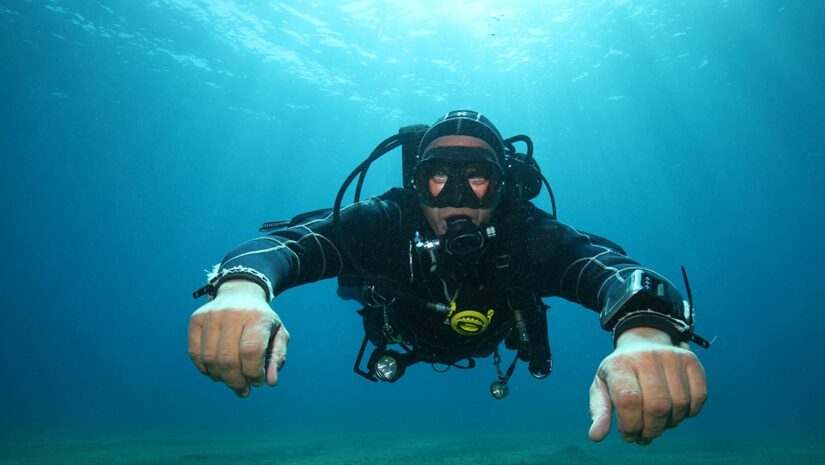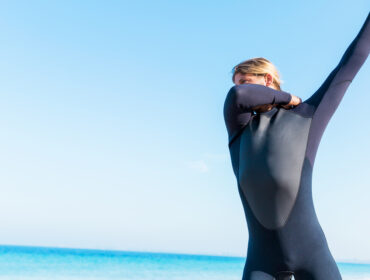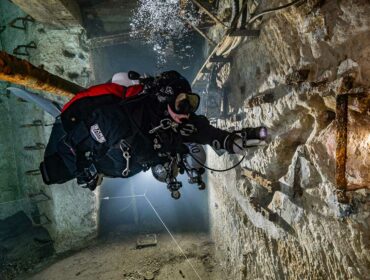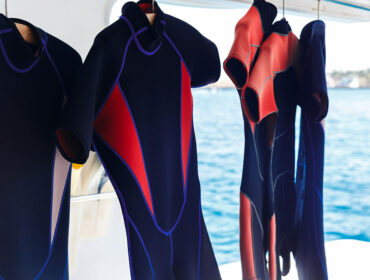To new divers, drysuit diving can seem like an intimidating undertaking, especially if you’re unfamiliar with what drysuit diving is all about. The truth is, drysuit diving is incredibly fun and opens up a whole new world of possibilities to explore cold water diving destinations around the world. If you’ve ever been curious about drysuit diving, we’ll lay out everything that you need to know about drysuit diving. Keep reading for information about safety training to what to look for when buying your own drysuit and even where to find the best drysuit diving spots around the world.
Here’s everything that you need to know about drysuit diving!
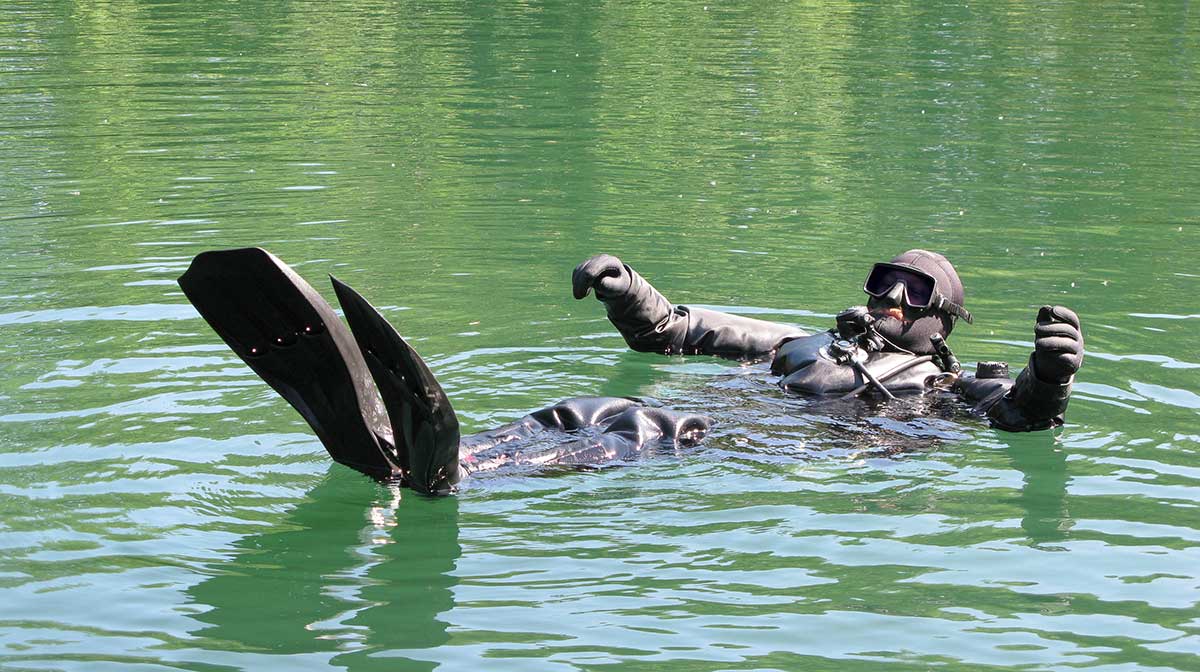
What is drysuit diving?
Diving in a drysuit allows you to dive without getting wet and thus, staying warmer. As you may remember from your dive training, water conducts heat away from the body at least 20 times faster than air. This means that diving in cold water can be incredibly uncomfortable without the right exposure suit.
You use a drysuit in cold water diving to keep water out using a layer of air around the body. A tight, waterproof seal keeps divers dry from the neck down, while the built-in inflation system allows you to add air in without letting water in. This protects divers from hypothermia and keeps you warm, making for a much more comfortable dive.
Benefits of drysuit diving
A drysuit let’s you enjoy cold-water diving and the unique underwater ecosystems that exist in freezing cold temperatures. Many drysuit advocates will tell you that diving in a drysuit can be addicting because you never have to deal with being wet and cold when you get out of the water since the drysuit keeps you, well, dry! That means no more salty skin, pruny hands, or tangled hair! You can enjoy a cold-water dive and be off to a five-star restaurant for dinner with no need to shower between.
However, there is one downside of drysuit diving: no peeing in your drysuit! In a wetsuit, relieving yourself underwater is no problem and can even be a great way to warm up on longer dives. But since the purpose of a drysuit is to keep you completely dry inside, there’s no opportunity to “go” on cold-water dives, so make sure you get it done before you get suited up!
Drysuit diving training
A drysuit is a new piece of equipment and diving in a drysuit is a new skill. As a result, it requires additional training in order to practice drysuit diving safely. Most notably, since drysuits are filled with air, managing buoyancy is very different from diving in a wetsuit. PADI offers a drysuit diving course that takes only one or two days to complete and will help you feel much more comfortable and safe when diving in a drysuit.
Challenges of drysuit diving
Of course, with the added benefit of dry warmth comes a significant challenge: due to air being used as a buffer between your body and the cold sea in the entire suit, maintaining neutral buoyancy becomes more difficult. A diver wearing a drysuit may find that he or she will need to add more weight onto the weight belt in order to achieve neutral buoyancy. With a drysuit, it is very important to conduct a buoyancy check before the dive begins.
Some divers often experience the problem of “floaty feet” when diving with a drysuit. This can easily be counteracted by adding some light ankle weights. Unlike diving with a wetsuit, diving with a drysuit requires the diver to control his or her buoyancy by adding air directly into the suit through the chest valve and releasing air from valves on the shoulder or wrist, rather than controlling through the BCD.
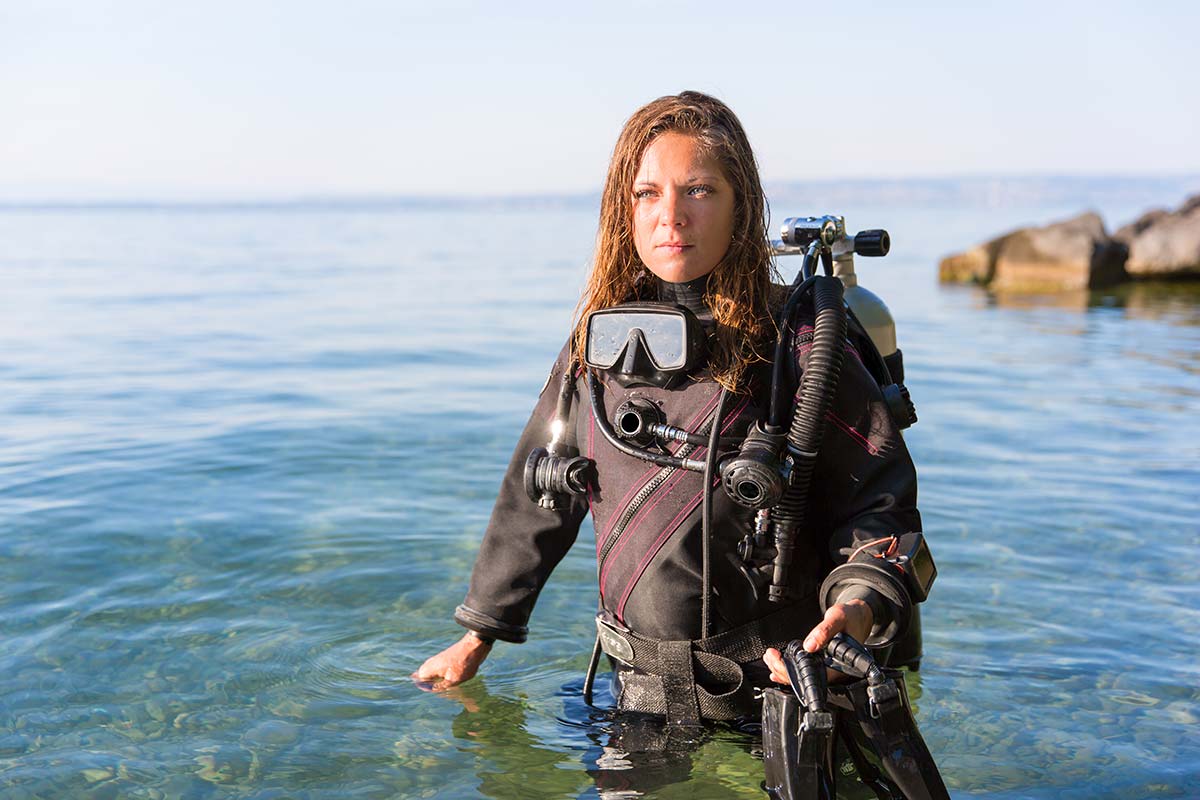
What to look for in a drysuit
There are a couple of things to look for when purchasing or renting a drysuit — read our drysuit buying guide to find the best one for you. Firstly, there are two main types of drysuits: membrane and neoprene. A membrane drysuit has a three-layered design that’s lightweight and flexible, but it doesn’t provide additional warmth. Meaning, you’ll likely have to purchase extra undergarments to wear under the drysuit. A neoprene drysuit is essentially a super thick wetsuit that’s waterproof. These are heavier but keep you warm without additional undergarments.
Before trying on drysuits, you’ll need to get measured first to figure out what size you’ll need. The fit of your drysuit is incredibly important for safety. It’s critical that you wear a suit that seals properly and does not restrict your range of motion.
Drysuit seals that are the wrong size will result in water getting into your drysuit. This is not exactly something you want when diving in Arctic conditions! As a general rule of thumb, if you can put your fingers too easily between your skin and the seal, it’s too big.
You also want to make sure that you have a good range of motion in the suit so that you can comfortably navigate underwater. A suit that restricts your movement could potentially put you in a dangerous situation on your dive. Be sure to get properly measured for a drysuit and check your seals thoroughly before each dive to ensure a proper fit.
Drysuit styles
All dry suits are full length and cover the entire body unlike wetsuits which come in options of shorties and full length wetsuits. However, drysuits are available in different materials. Neoprene drysuits are made of the same material as wet suits, except they exclude water. Shell dry suits are the more popular versions that consist of two pieces. They are loose fitting suits that provide ‘double protection’ with an insulating layer of air between the two materials. The outer part of a drysuit is a waterproof shell made from materials like neoprene, foam rubber, or a hybrid of both while the second layer is an undergarment, also made of several materials including bunting, open foam Thinsulate that provides insulation.
Tips for buying a drysuit
- Unlike a wetsuit, a drysuit should be a little loose fitting on the body so you can wear clothing in it comfortably or undergarments for extra insulation, but not too loose so the air bubble inside plays havoc with your trim and buoyancy. The wrist and neck seals however, have to be snug and tight enough to keep water out without cutting off blood flow.
- Choose your undergarment when choosing your dry suit. That way you can try them both on.
- Look for drysuits with thigh pockets. These are a good thing and provide the best place to store those needed small things that you want with you on your dive. Much easier to reach than the pockets of your BC.
- Some suits feature suspenders which make it much easier to don and wear since they help keep the waist up where it needs to be rather than “baggy-ing” downwards.
- Lastly, make sure the exhaust valve of the suit is in the proper place which is usually between the shoulder and elbow, pointing straight up when you hold your arm level with your shoulder. If it’s not in the right spot, then the air won’t escape adequately as it expands, which could prove dangerous during ascents.
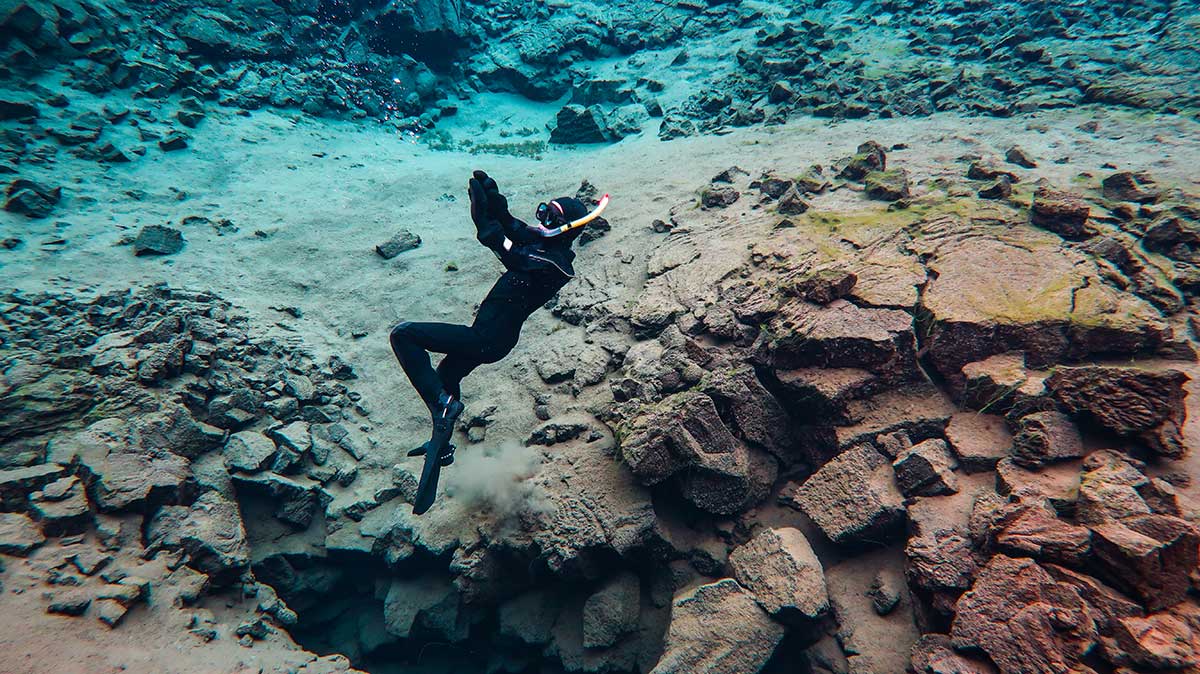
Where can you go drysuit diving?
Now that you have the drysuit basics nailed down, let’s start planning your first drysuit dive trip! Here are some of the top destinations around the world for drysuit diving.
Silfra Fissure, Iceland
This is arguably one of the most popular cold water dives in the world. When you dive the Silfra Fissure, you’re actually diving in two continents at once. The Silfra fissure is where the North America and Eurasian tectonic plates meet. It is truly a once-in-a-lifetime experience for divers. Plus, the visibility of more than 100m makes this dive truly remarkable.
Scapa Flow, Scotland
Wreck divers can still have plenty of fun drysuit diving as well. These wrecks in Scotland are literally underwater history museums. The ships are what remains of the World War 1 German High Seas Fleet.
Channel Islands, California
Drysuit diving just might be the key to an underwater encounter with sea lions. In California’s Channel Islands, divers can swing amongst huge kelp forests, colorful fish, octopus, nudibranchs, and even playful sea lions.
Conclusion
Drysuits allow a diver to dive more comfortably in colder waters, but those new to diving with a drysuit should be aware that it also introduces new challenges to and methods of maintaining neutral buoyancy. That said, learning how to dive with a drysuit is a rewarding challenge, and often allows divers to see places and creatures they wouldn’t otherwise be able to.
Written by: Emily De Sousa
Emily is a fisheries scientist and sustainable seafood educator based in Canada. She is the founder of Seaside with Emily, a platform for sustainable seafood guidance and seafood travel inspiration. Follow on Instagram, Twitter, TikTok.

